Linden Tree
- November 13, 2023
- 1 comment
The Linden tree, also known as the lime tree or basswood, is a deciduous tree that belongs to the Tilia genus. Revered for its graceful, heart-shaped leaves and fragrant, pale-yellow flowers, the Linden tree holds a special place in cultural and historical contexts. Its name, derived from the Old English “lind,” signifies flexibility, aptly describing the tree’s supple branches and versatile uses.
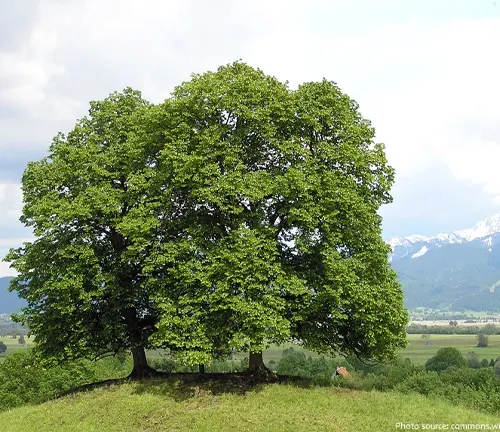
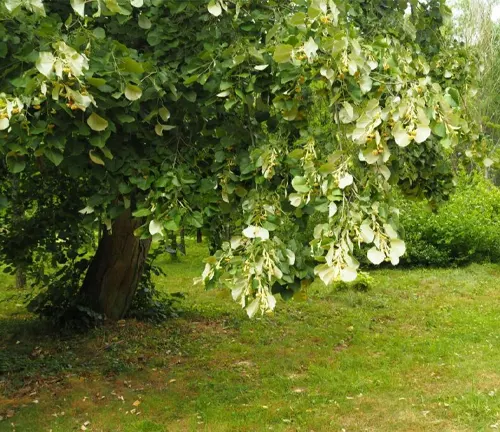
With a distinctive pyramidal shape, Linden trees are often planted as ornamental specimens in parks and gardens, providing shade and attracting bees during their blooming season. Beyond its aesthetic appeal, the Linden tree has played a role in various folk traditions and herbal remedies.
The tree’s aromatic flowers have been used to brew soothing teas known for their calming properties, while the wood itself is valued for its fine grain and light weight, making it suitable for carving and crafting. Symbolically, the Linden tree is associated with love and fertility in some cultures, adding a layer of significance to its enduring presence in literature, art, and folklore. Overall, the Linden tree stands as a testament to the harmonious blend of natural beauty and cultural significance.
| Characteristics | Description |
| Scientific Name | Tilia spp. |
| Common Names | Linden tree, Lime tree, Basswood |
| Family | Malvaceae |
| Type | Deciduous |
| Height | 60 to 80 feet (18 to 24 meters) |
| Leaves | Heart-shaped, serrated edges |
| Flowers | Fragrant, pale-yellow, clustered in hanging cymes |
| Blooming Season | Late spring to early summer |
| Fruit | Small, round, nut-like, often accompanied by a wing-like bract |
| Bark | Smooth and gray when young, becoming furrowed with age |
| Habitat | Thrives in well-drained soil, commonly found in temperate regions |
| Uses | Ornamental planting, timber for carving and crafting, medicinal properties |
| Symbolism | Associated with love and fertility in some cultures |
| Cultural Significance | Featured in literature, art, and folklore |
| Notable Varieties | Tilia americana (American Linden), Tilia europaea (European Linden) |
| Conservation Status | Generally not endangered |
Botanical Beauty of Linden Tree
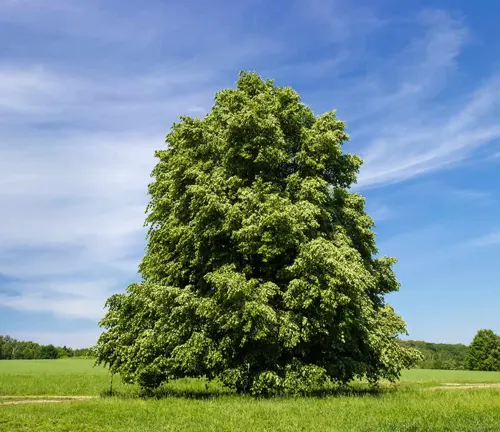
The Linden tree, scientifically known as Tilia spp., stands out as a botanical masterpiece with its distinctive features. Admired for its graceful, heart-shaped leaves and fragrant, pale-yellow flowers, the Linden tree adds a touch of elegance to the landscape. The scientific genus, Tilia, encompasses various species commonly referred to as Linden, Lime, or Basswood, each contributing to the tree’s overall botanical allure.
Woodland Elegance
In the heart of woodlands and urban parks, the Linden tree graces the surroundings with its woodland elegance. With a height ranging from 60 to 80 feet, these deciduous giants display a pyramidal shape and possess smooth, gray bark when young, which matures into a beautifully textured, furrowed exterior. The fine grain of Linden wood makes it a favored material for carving and crafting, adding to the tree’s allure beyond its natural aesthetic.
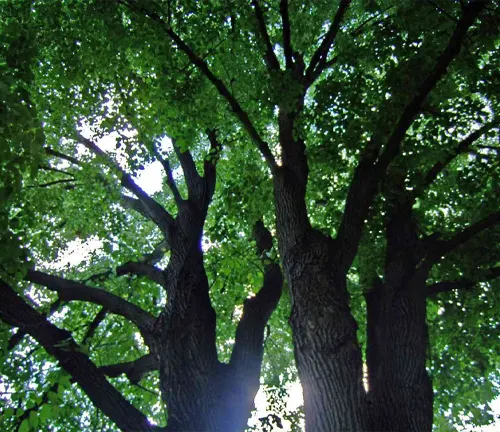
Ecological Importance
Beyond its visual appeal, the Linden tree plays a vital role in the ecosystem. Thriving in well-drained soils, Lindens are commonly found in temperate regions. Their broad canopy provides shade and habitat for various wildlife, contributing to the overall biodiversity of their environment. Moreover, the Linden tree’s leaves decompose quickly, enriching the soil and supporting the nutrient cycle.
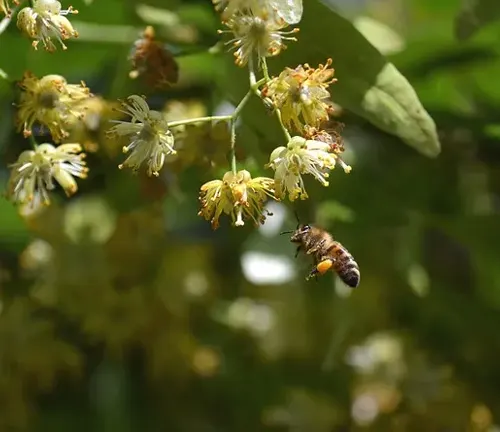
Cultivation and Conservation
Cultivating Linden trees involves understanding their specific habitat needs. These trees prefer well-drained soil and thrive in areas with abundant sunlight. While Lindens are not generally endangered, their cultivation is essential for maintaining their ecological balance and ensuring the preservation of their unique genetic diversity. Arborists and conservationists work hand-in-hand to protect these trees and promote sustainable planting practices.
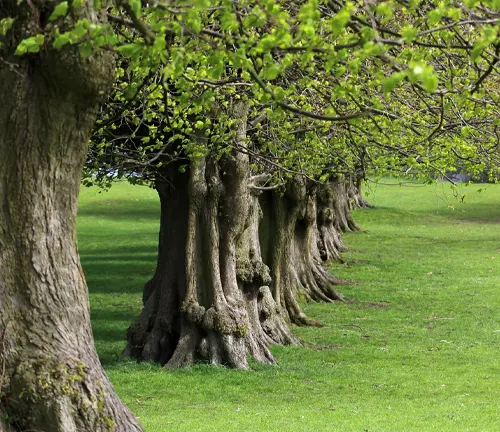
Fragrance
One of the Linden tree’s most enchanting qualities is its fragrance. The tree produces clusters of small, pale-yellow flowers that emit a delightful scent, attracting bees during their blooming season in late spring to early summer. This aromatic attribute has inspired poets and artists, making the Linden tree a muse in various creative expressions.
Soil Stabilization
Linden trees contribute to soil stabilization, thanks to their extensive root systems. The roots help prevent soil erosion, making Lindens valuable in landscaping projects and conservation efforts. Their ability to anchor soil makes them an eco-friendly choice for areas prone to erosion, showcasing the tree’s multifaceted role in environmental sustainability.
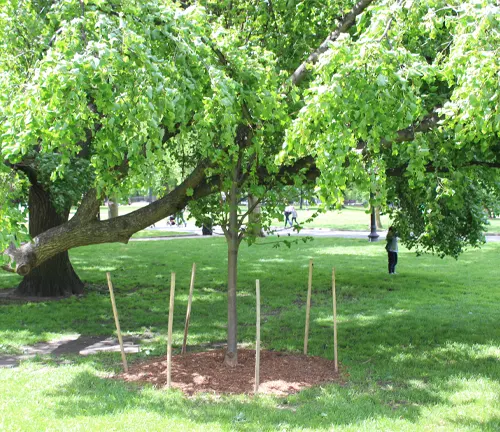
Common Uses
The Linden tree’s versatility extends beyond its ecological contributions. Historically, Linden wood has been prized for its fine grain, making it a preferred material for carving sculptures, utensils, and even musical instruments. The flexible branches have been utilized in basket weaving, highlighting the resourcefulness of this remarkable tree in various traditional crafts.

Benefits
The benefits of the Linden tree are manifold. Medicinally, Linden flowers are used to brew teas known for their calming properties, contributing to traditional herbal remedies. Symbolically, Lindens are associated with love and fertility in certain cultures, adding a layer of cultural significance to their presence in literature, art, and folklore. Beyond their aesthetic appeal, Linden trees stand as a testament to the harmonious intersection of nature, culture, and human ingenuity.
Different Species
Tilia americana
(American Linden)
This native North American species is also known as Basswood. It features large, heart-shaped leaves and fragrant flowers. American Linden is a popular choice for urban landscaping due to its adaptability.
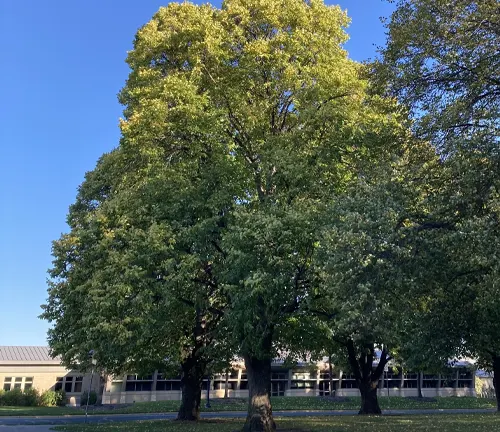
Tilia europaea
(European Linden)
Native to Europe, this Linden species is well-known for its pyramid-shaped crown and smaller, more rounded leaves compared to its American counterpart. It is often planted in parks and along streets for its aesthetic appeal.
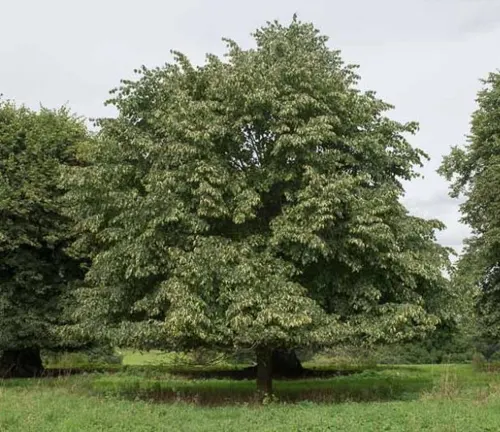
Tilia cordata
(Littleleaf Linden)
Characterized by its small, heart-shaped leaves, Littleleaf Linden is native to Europe and widely planted as an ornamental tree. It is known for its tolerance to urban conditions and compact size.
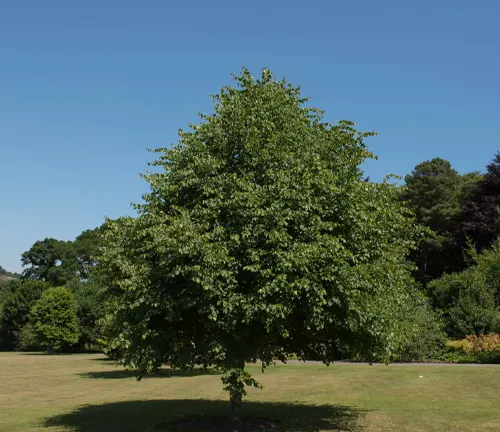
Tilia platyphyllos
(Large-leaved Linden)
Native to Europe and Asia, this Linden species is recognized for its large, heart-shaped leaves. The flowers are fragrant and attract bees during the blooming season.
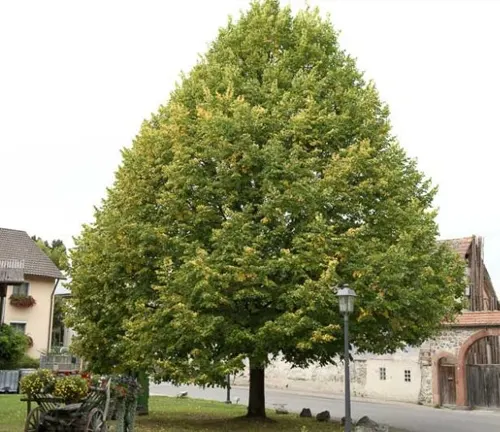
Tilia tomentosa
(Silver Linden)
Originating from southeastern Europe and southwestern Asia, the Silver Linden is named for the silver-white undersides of its leaves. It has a pyramidal shape and is commonly used in landscaping.
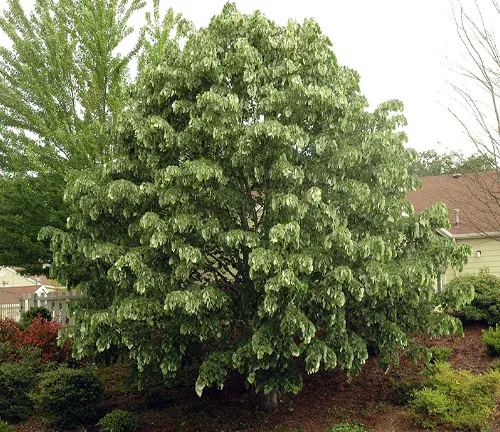
Tilia japonica
(Japanese Linden)
Native to East Asia, particularly Japan, this Linden species is appreciated for its small, fragrant flowers and glossy leaves. It is often planted in gardens and parks.
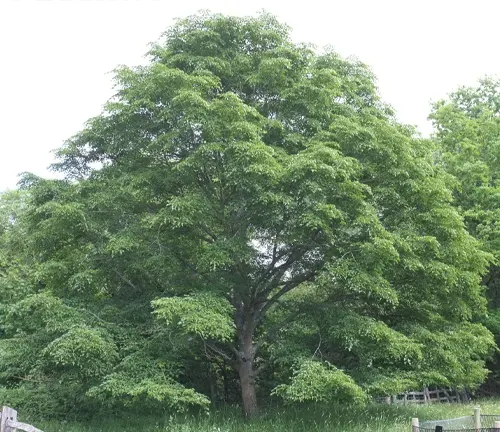
Tilia heterophylla
(White Basswood)
Found in eastern North America, White Basswood is recognized for its heart-shaped leaves with serrated edges. It produces fragrant, pale-yellow flowers in clusters.
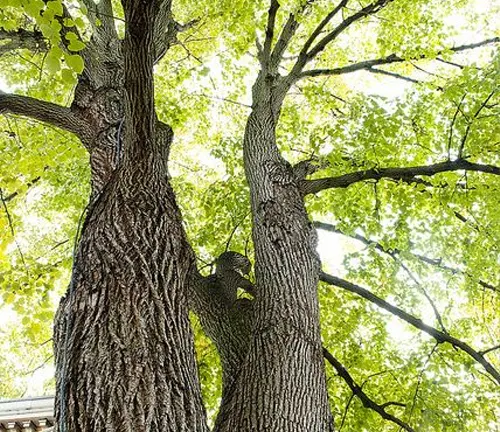
Tilia dasystyla
(Crimean Linden)
Native to the Crimean Peninsula, this Linden species is known for its attractive, deeply lobed leaves and fragrant flowers. It is often planted for ornamental purposes.
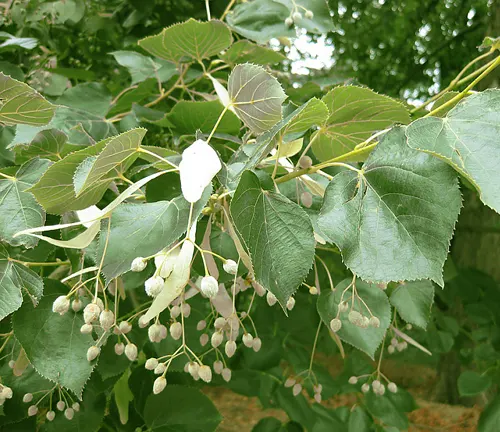
Frequently Asked Questions (FAQs)
- What is a Linden tree?
A Linden tree, also known as Lime or Basswood, belongs to the Tilia genus and is characterized by its heart-shaped leaves and fragrant flowers. It is a deciduous tree with various species found in different regions. - What are the common uses of Linden trees?
Linden trees have versatile uses. The wood is prized for carving and crafting, and the flexible branches are used in traditional crafts like basket weaving. Linden flowers are also used to brew teas with calming properties in herbal remedies. - Are Linden trees suitable for urban landscaping?
Yes, many Linden tree species, such as Tilia americana (American Linden) and Tilia europaea (European Linden), are well-suited for urban environments. They tolerate a range of soil conditions and provide aesthetic beauty. - What is the blooming season for Linden trees?
The blooming season for Linden trees is typically in late spring to early summer. During this time, the trees produce clusters of small, fragrant, pale-yellow flowers that attract bees. - Are Linden trees easy to cultivate?
Linden trees generally thrive in well-drained soil and prefer areas with abundant sunlight. They are relatively low-maintenance once established and are known for their adaptability. - Are Linden trees endangered?
Linden trees are not generally endangered. However, conservation efforts are essential to protect their ecological balance and preserve the genetic diversity of different Linden species. - What is the symbolism of Linden trees?
Linden trees are associated with love and fertility in certain cultures. They hold symbolic significance and are often featured in literature, art, and folklore. - Can Linden trees help with soil stabilization?
Yes, Linden trees contribute to soil stabilization through their extensive root systems. They are effective in preventing soil erosion, making them valuable in landscaping projects and conservation efforts. - Are all Linden tree species fragrant?
Many Linden tree species are known for their fragrant flowers, especially during the blooming season. The scent, often described as sweet and pleasant, is a notable characteristic of these trees.


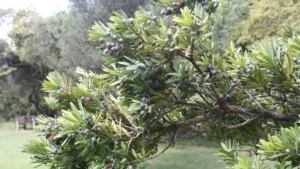

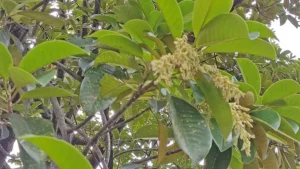
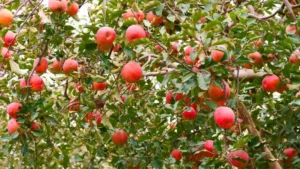



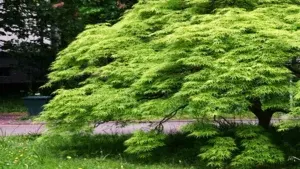

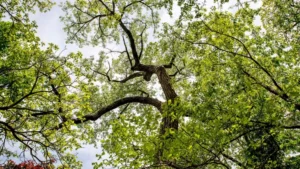

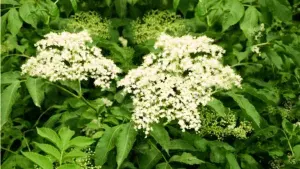
Linden trees are very messy. They drop flowers in the summer, leaves throughout the fall in two separate waves, and branches the rest of the year. I find my Linden to be a very high mainteance tree.
Erin Collard
March 2, 2024 12:54 am